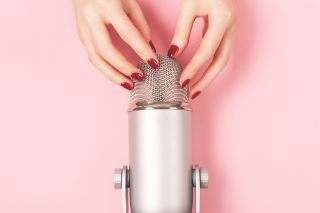ASMR
What We Really Know About ASMR
New research sheds light on this social media phenomenon.
Updated April 4, 2024 Reviewed by Abigail Fagan
Key points
- Autonomous sensory meridian response, or ASMR, is a tingly feeling in the head and upper spine.
- Research shows that watching videos that trigger ASMR can lead to positive feelings throughout the body.
- Data shows ASMR can lead to stress release, relaxation, and benefits for short-term memory.

If you spend time on YouTube or TikTok, you may have come across videos of someone whispering into a microphone, carefully slicing stacks of slime, or slowly ripping strips of paper. These videos are designed to trigger an autonomous sensory meridian response, or ASMR, a tingly feeling that travels from the top of the scalp down the back of the neck to the upper spine.
Watching videos that trigger ASMR is thought to lead to positive responses throughout the body including enhanced mood, relaxation, and even pain relief. But can you really achieve these benefits just by watching a short video?
A systematic review published in the journal Psychology of Consciousness: Theory, Research, and Practice seeks to answer that question. German researchers combined the data from 54 empirical studies to better help us understand ASMR and its effects.
But first, where did this idea come from? There are references to sensations similar to ASMR in classic literature dating back to the early 1900s. For example, in a passage in Virginia Woolf’s Mrs. Dalloway, a nursemaid is whispering in the ear of Septimus, a World War I veteran who suffers from post-traumatic stress disorder. “Septimus heard her say ‘Kay Arr’ close to his ear, deeply, softly, like a mellow organ, but with a roughness in her voice like a grasshopper's, which rasped his spine deliciously and sent running up into his brain waves of sound.”
Contemporary definitions of ASMR sprung from a discussion forum in a health-focused website in 2007, when a participant described experiencing ASMR since childhood, and many others replied to report similar sensations. A YouTuber named Jennifer Allen coined the term in 2010.
The new review, published late last year, pulled together the various definitions of ASMR to develop a common meaning. It defined ASMR as a tingling sensation running from the scalp down the spine that provides a sense of relaxation and well-being. Specific auditory or visual stimuli trigger the feeling.
Examples identified in the review include whispering, tapping, and natural sounds; it is important to note that specific triggers of ASMR and the intensity of the response varies widely by individuals.
The review gave an overview of ASMR assessment tools and explored the benefits of ASMR. It found clear evidence that ASMR can reduce stress and anxiety. Data also shows that ASMR can improve short-term memory. In studies that measured physiological responses, participants watching ASMR videos had lower heart rates and blood pressure, physical signals of relaxation. In addition, neuroimaging studies included in the review found that ASMR triggers brain activity patterns associated with relaxation and stress relief.
Despite the encouraging results, the authors noted that many of the ASMR studies had small sample sizes and a lack of diversity among participants; more research is needed to truly understand the impacts of ASMR.
The take-home message: It’s true, watching sensory videos of people brushing their hair, whispering, and making soft repetitive noises can lead to relaxation and stress relief. The best thing about ASMR is that there are minimal side effects. So if you’re feeling anxious or stressed, it might be worth watching a few minutes of ASMR videos to see if they help!


